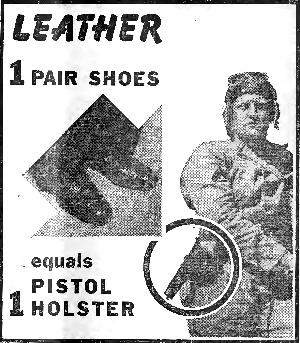
Think of wartime rationing — what springs to mind? Caustic, home-made soap. Government-issued ration cards. Squalid London housewives squabbling over a package of streaky bacon. In short, a generation of families who had to make do with what little they had. Chances are you did not think of the rife and lucrative black market trade in typewriters.

On the 16th of Januray 1942, Franklin D. Roosevelt established the War Production Board. The aim was to control the supply of materials and the production of equipment for the war. The British had done the same thing the year before and had managed to redirect the whole of fifty manufacturing industries towards wartime production. From across the Atlantic, Frankie Roosevelt thought it looked like a pretty peachy idea.
By the 31st of October, the United States ceased all production on typewriters with the exception of a couple here and there for government use. Terror struck the heart of this great nation. The US government was forcibly depriving its citizens of the things they held most dear. Thousands of new typewriters were already in shops, as well as countless second-hand machines in circulation. Their value suddenly soared. The rationing and black market trade began.
The government’s interference in household and business goods sparked an immediate reaction amongst consumers. Every rationed industry experienced a black market trade. No new typewriters were being produced for the public for a period of two years. What typewriters were on the market were heavily rationed and many were snapped up by the military to ensure smooth communications. “Garbled messages to an Army corps could be as fatal as a lack of machine-guns” (“Drive to Buy Typewriters”). The military bought up hundreds of thousands of the things, and held drives to buy up whatever people were willing to sell. Each state even had a quota to fulfill. Imagine that same situation happening today with computers. Not only would there be a mad scramble for the last computers in shops, but a secret, desperate trade for new machines would spring up overnight. Shady types on street corners would have hard drives stuffed down their pants. Airport security would catch anyone with an illicit USB stick. Businessmen in expensive suits would smuggle server racks under their coats.
The consolation prize for the suckers in the public was a pat on the back and the reassurance that only the military — not the government — would get their typewriters. Civilian typewriter owners received a cheap pamphlet demonstrating “how they can make three machines do the work of four”. The enterprising civilian had the choice of “scores of ways in which this may be accomplished”. (“Drive” 3).
By 1944 the war must have been looking better for the allies because typewriter rationing began to wind down. They lifted the rationing on all existing typewriters and started to resume production on new machines — but not for everyone. The only people who deserved typewriters in 1944 were still the government and military types. The home user and businessman were told to go stick it until the war was over.
The USA’s concentration of production looks very official on paper, but has a slightly cack-handed ring to it. While the Brits redirected over fifty industries to wartime production, the US converted only four: stoves, typewriters, bicycles and farm equipment (Myers 222). Other industries were scheduled for conversion or were curtailed for the duration of the war. These include the high-flying world of pinball, jukeboxes and vending machines (“Associated” 76). While production may have stopped in these areas, none seems to have been converted as it was originally intended. By 1943 year the chairman of the WPB described their hopes for further concentration of resources as “a dead pigeon” (Myers 222).
Bibliography
-
“Associated Press Survey Adds Credit to Industry”. The Billboard 54.16 (18 April 1942): 76. Print.
-
“Drive to Buy Typewriters for Army, Navy Starts”. St. Petersburg Times 28 May 1943: 3. Print.
-
Myers, Charles A. “Wartime Concentration of Production”. The Journal of Political Economy 51.3 (1943): 222-234. Print.
-
Roosevelt, Franklin D. “Executive Order 9024 Establishing the War Production Board”. The American Presidency Project. Web. 3 February 2011 <http://www.presidency.ucsb.edu/ws/index.php?pid=16297>.
-
“Typewriter Deal Criticized”. Pittsburgh Post-Gazette 24 January 1945: 2. Print.
-
“Typewriter production to cease October 31, except few for war”. Victory 11 August 1942: 19. Print.
-
“Used Typewriter Rationing to End”. The Milwaukee Journal 20 April 1944: 6. Print.
-
“Who can buy Typewriters … and who can’t!“. LIFE 7 February 1944: 99. Print.